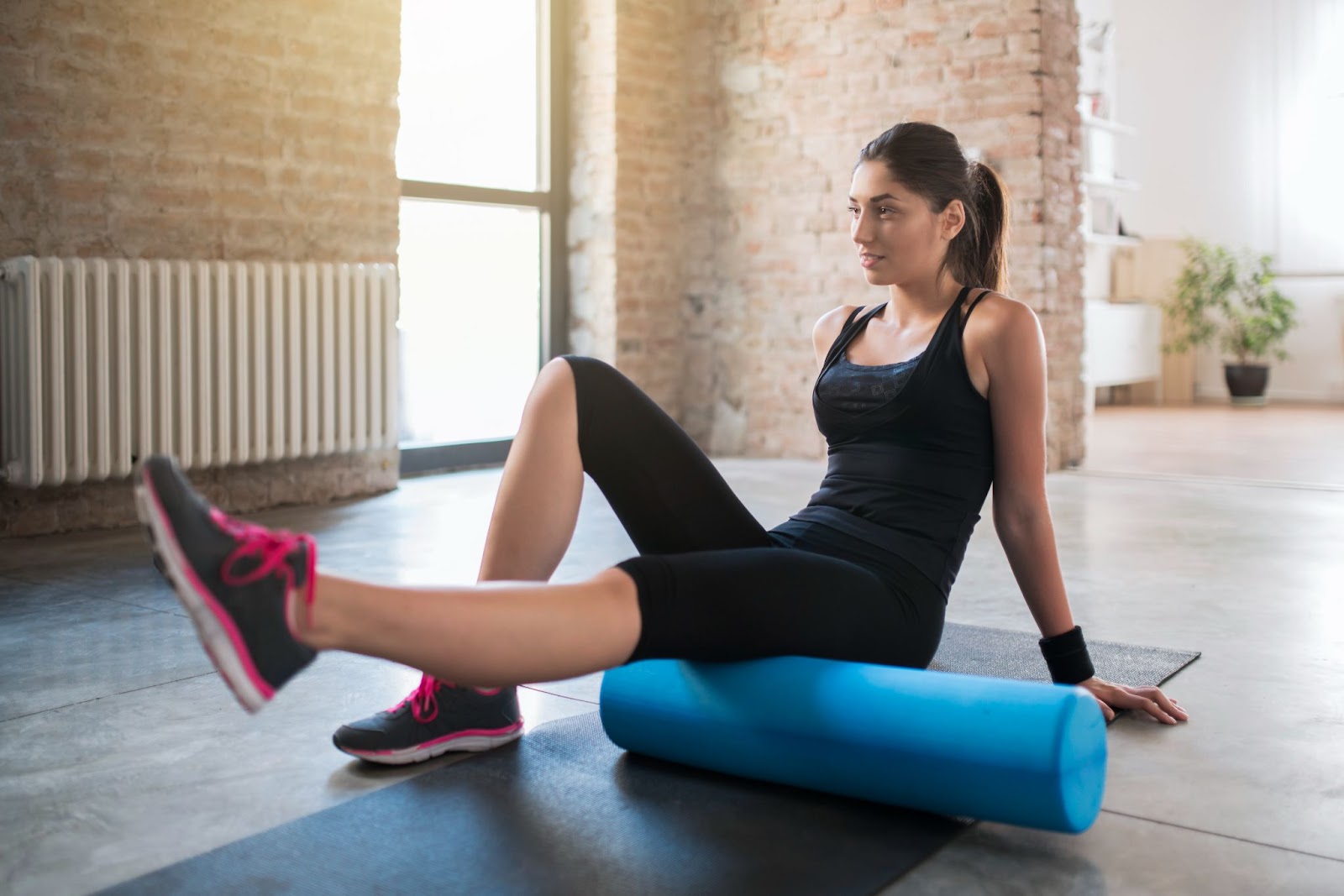What is foam rolling?
Foam rolling is a method of muscle stretching that uses a hard foam tube to roll the muscles out. The process helps to relax tense muscles and work through knots that traditional stretching cannot access. It can also help relieve pain after an injury.
What kind of foam roller do I need?
If you’re new to foam rolling, it’s recommended to begin with a hard foam roller. Their softer, more squishy counterparts often wear out quickly and don’t get through muscle knots as well as a hard roller. More experienced foam rollers looking to increase the intensity of their sessions may look into a grid roller (a roller with bumps or indentations, often with a plastic core).
How do I get started in a foam rolling practice?
To begin foam rolling, first identify a targeted area. For example, if you are targeting your left hamstring muscle, you’ll position yourself differently than if you were working on your quadricep. Here are the three primary steps to consider:
- Position your body over the foam roller so the muscle you want to roll is on top of the foam roller. In the example mentioned above, you’ll rest your hamstring on top of the foam roller, while propping your body up on your hands. Bend your non-working leg at the knee and place your foot flat on the floor.
- Roll, applying pressure, back and forth over the muscle ten times (five times up, five times down). While rolling, make sure the body is stable and has sufficient contact with the floor (foam roller contact and two additional points of contact).
- Rest for several seconds and repeat the foam rolling process one or two more times.
What are some other things to keep in mind?
Foam rolling is an excellent way to stretch and relieve tight muscles, and to get the best effect of the practice, it’s important to remember some key safety principles:
- Maintain three points of contact with the floor (including the foam roller).
- Do not apply the foam roller over or behind joints—instead, focus on the muscles around your joints.
- If you’re new to foam rolling, only roll every other day. Once you are experienced, roll a maximum of three times in a day.
Get Rolling!
With this introduction to foam rolling, you’re ready to get started. Integrating foam rolling into your activities is an excellent way to stretch your muscles, reduce pain after exercising, recover from an injury and help prevent muscle strains in the future.


